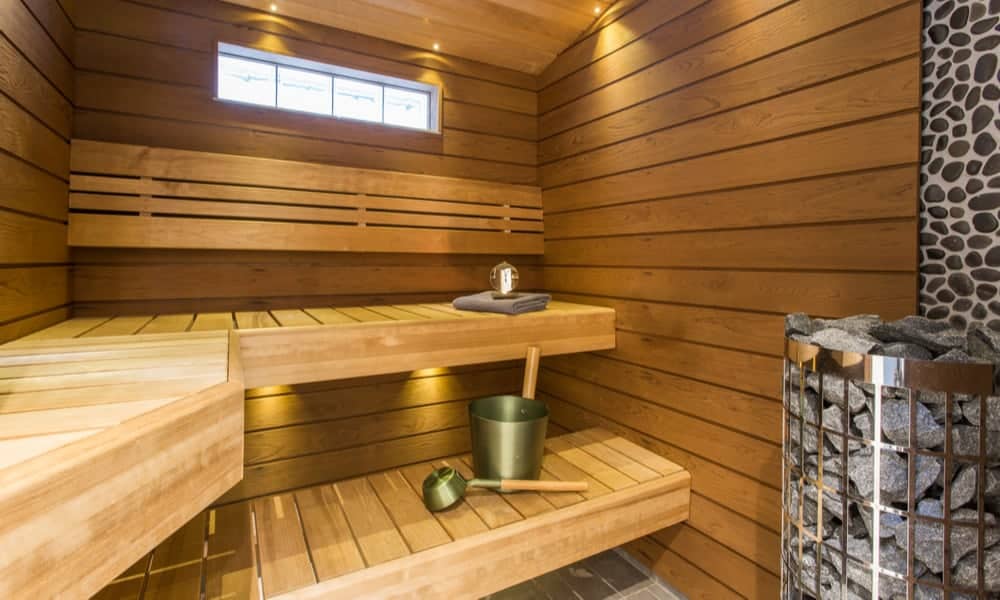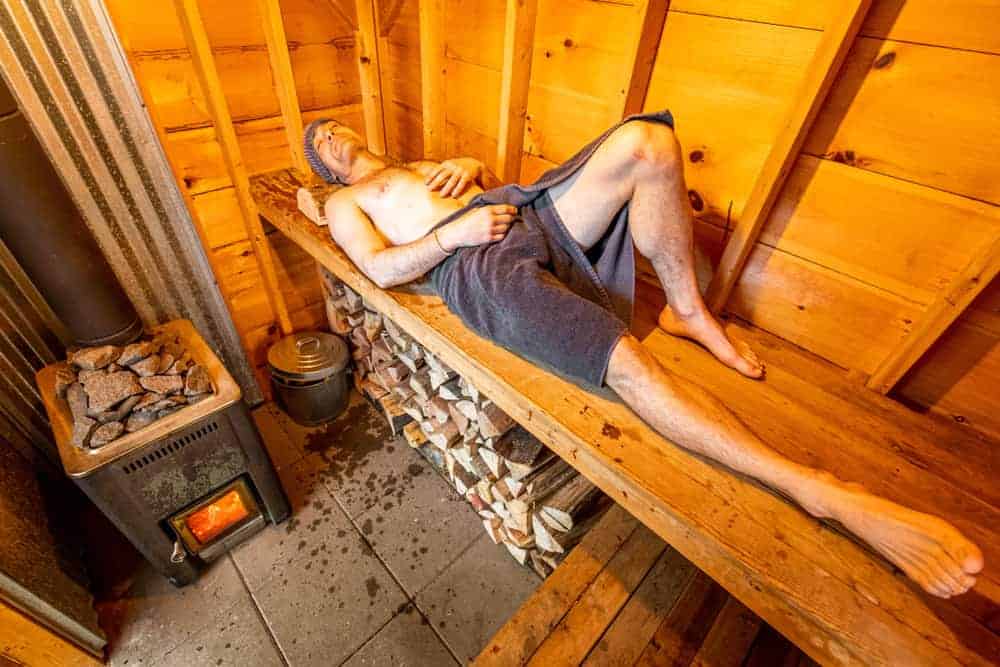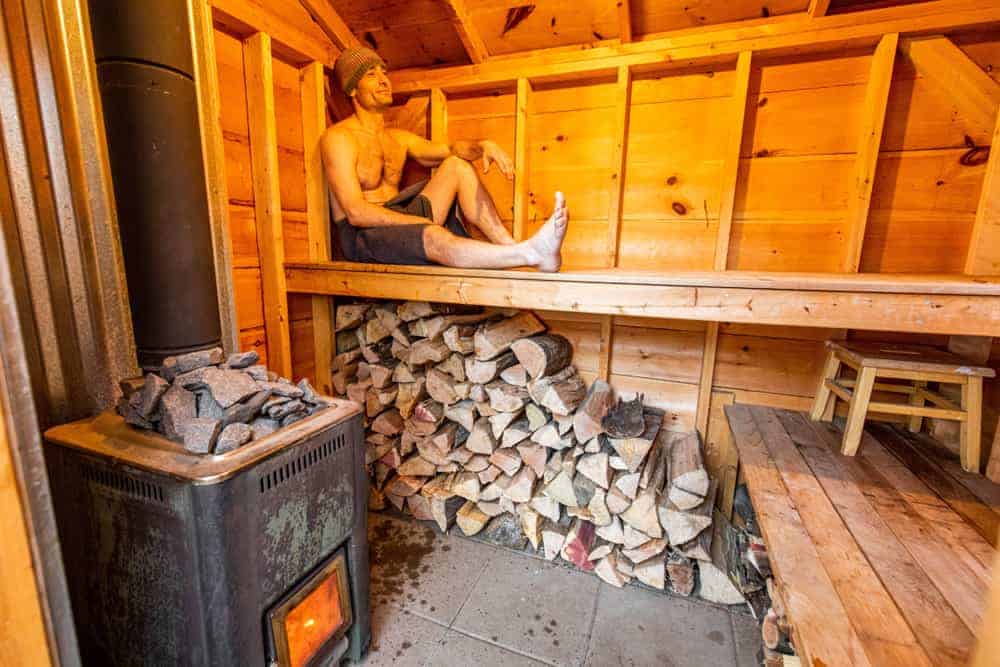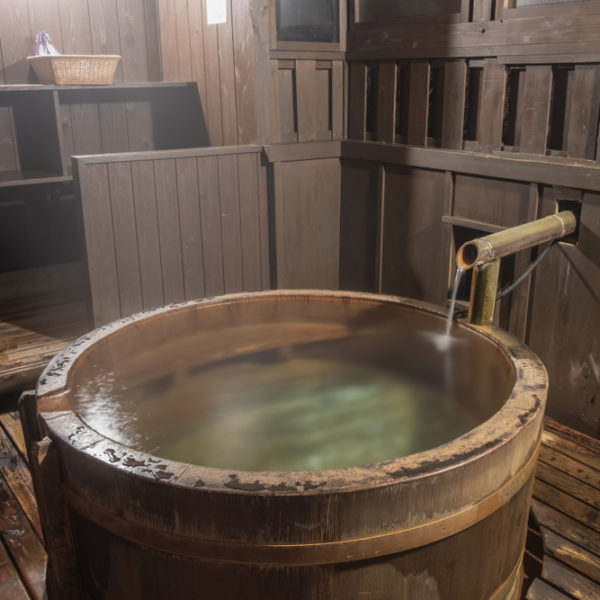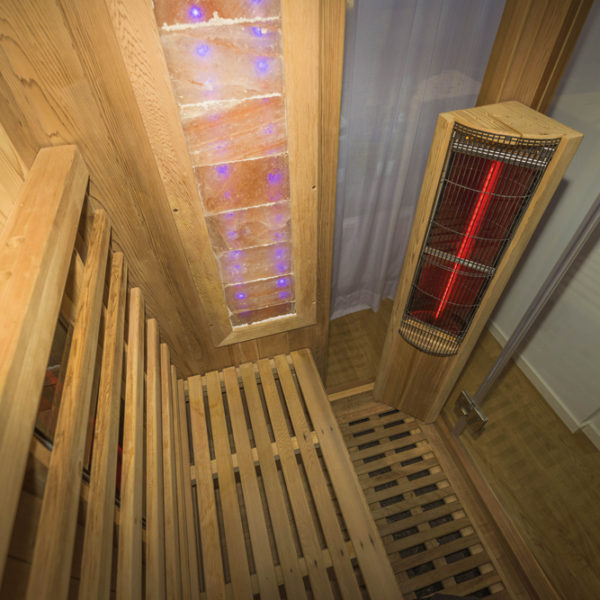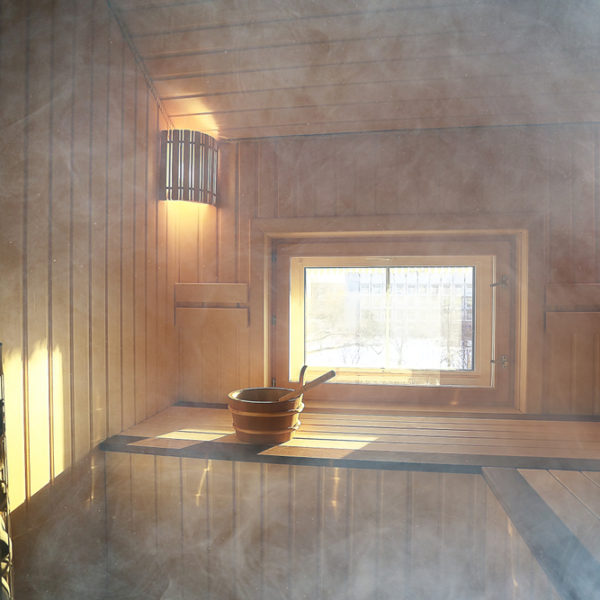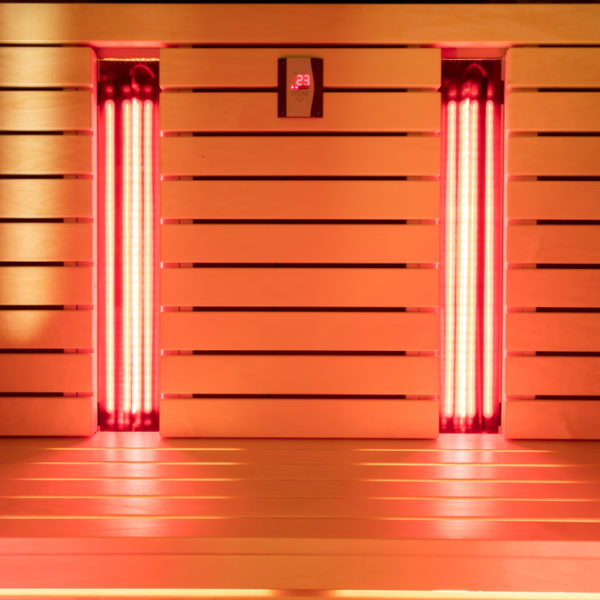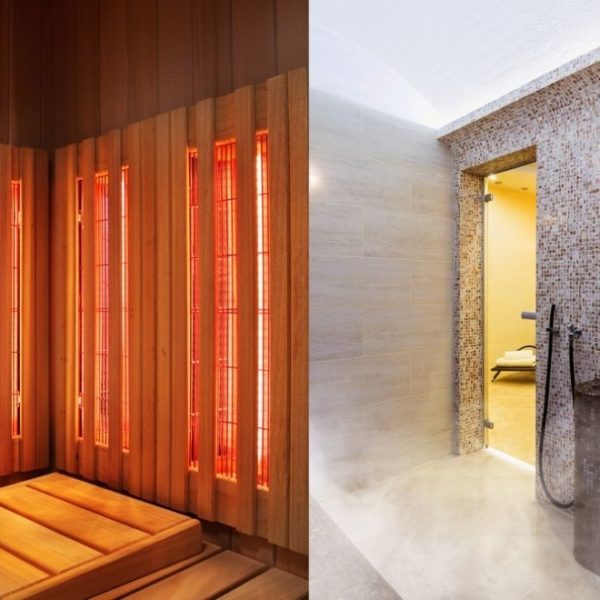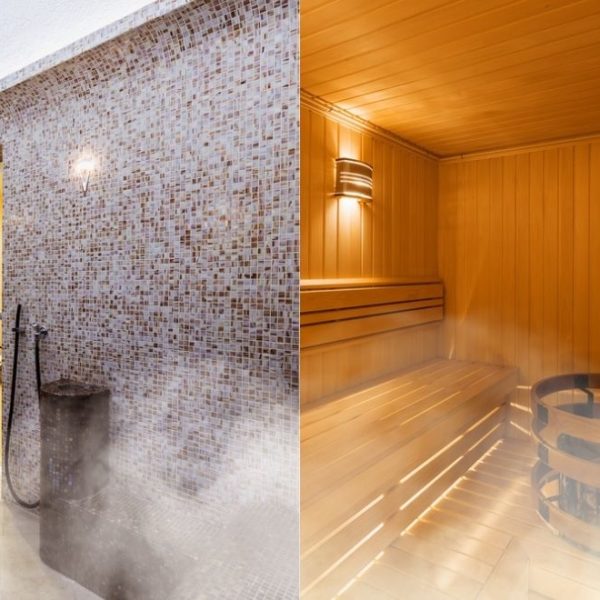More and more of us are incorporating a sauna in our routine as a way to relax and unwind. But how much time should you spend inside to get the benefits? And can you overdo the heat?
If you’ve been wondering, “How long should you stay in a sauna?”, you’ve come to the right place! We’re going to look at everything you need to know to get the most from your sauna session. And we’ll cover how to enjoy the heat without feeling any ill effects.
So if you’re ready, step this way to find out more!
How does a sauna work?
Let’s start by taking a look at what a sauna is, and how it works.
There are lots of different kinds of saunas out there. You may hear people talking about infrared saunas, Finnish saunas, Russian saunas and Korean saunas. You may even hear people talking about spending time wrapped in a sauna blanket.
But while there are differences in the details, all saunas work on the same basis. They create a hot environment that makes you sweat.
Search the internet, and you’ll find a whole host of health benefits attributed to saunas. The truth is that there’s some limited evidence that saunas can help with things like chronic pain and cardiovascular disease. But the studies that have supported this have mostly been small scale.
In other words, the jury is still out. But whether saunas can help with health conditions or not, they’re undeniably relaxing. And in some parts of the world, they’re a very important part of socializing and even doing business.
So how long do you need to spend in a sauna to relax and unwind?
How long should I stay in a sauna is long enough?
The question of how long to spend in a sauna depends on the effects of the heat. So how long is long enough?
Well, if you’ve been to a sauna already, you might have seen a device called a sauna timer. This consists of a glass tube with sand inside. The idea is that you turn it over when you enter the sauna, and leave when the sands run out.
Most sauna timers are set for that to happen in 15 minutes. So is that the right time to spend in a sauna? The answer is no, not necessarily.
The main issue here is that different people will react to the heat in different ways. And if you spend longer in a sauna than your body can cope with, you can face serious difficulties. Let’s find out why.
The effects of heat on the body
Human beings are homeotherms. That means that our internal temperature needs to stay steady for all the processes in our bodies to work properly. That temperature varies a little from person to person, but is about 98.2 degrees Fahrenheit.
When we go into a sauna, the air around us is much hotter. That means our bodies need to work harder to maintain our core temperature at the right level.
The main way they do that is by making us sweat. Sweat carries moisture to the surface of our skin, where it evaporates, cooling us down.
When we’re hot, our blood vessels will dilate too. That increases their surface area so that heat can be lost more quickly. Depending on our skin color, that can leave us looking flushed.
But too much heat can cause problems. When we sweat, we lose water – and water is essential for our bodies to function. If we lose too much, we’ll become dehydrated. Dehydration can cause problems including headaches, lethargy and constipation.
And if it’s too hot for too long, our bodies can’t reduce our core temperature to the right level. That means heat exhaustion, and in its severe form, heat stroke.
Both are serious conditions, and heat stroke can be fatal. So it’s important not to stay anywhere that’s very hot – including a sauna – for too long.
Different strokes for different folks
Everyone is different. What may be a comfortable amount of time for one person to spend in a sauna may be too much for another. So how do you know what the right length of time is for you?
- Well, some people will be naturally heat sensitive. If you’re pregnant, you’ll find the heat more difficult to cope with. The same goes for children under the age of 4, or older people over 65.
- Low blood pressure and kidney disease can also make the effects of the heat more challenging. If you have either of these conditions, check with your doctor before you use a sauna.
- The same thing applies if you’re taking medicine for low blood pressure or other diuretics. These make you urinate more often, so you’ll be more prone to dehydration.
And in some cases, medical conditions can make you less likely to notice the effects of the heat. That can be dangerous in a different way.
- If you have diabetes or motor neurone disease, for example, you may have nerve damage. And that can mean you’re less able to tell if something is too hot before you get burned.
- Hot temperatures also mean your heart rates increases. Although saunas can be beneficial for some types of heart condition, they can also carry risks. A higher heart rate can lead to arrhythmia – that’s an irregular heartbeat.
- If you have a heart condition, talk to your doctor about whether a sauna is suitable for you.
Managing the risk
For most people in good health, a sauna is very low risk indeed – as long as you listen to your body. The important thing is to be mindful of how you are feeling. If you are uncomfortable, there’s no need to persevere.
In fact, staying in the heat when your body is telling you it’s suffering is counter-productive. If you stay there too long, you risk serious illness.
So ditch the sauna timer, and instead focus on how you are feeling. And as a rule of thumb, don’t spend longer than 15 minutes in the sauna in one go.
Accessorize for added protection
If you want to extend your sauna session, there are some things that can help you stay comfortable. A sauna hat is a traditional accessory in many countries. It’s a great way to help keep your head cooler for longer.
Sauna hats are usually made of woolen felt, which is a great insulator. Although it might seem odd to wear a wooly hat to keep cool, it works brilliantly in a sauna. That’s because the air is so much hotter than your body temperature. The felt prevents the heat from getting to your head.
Some people also soak their hat in cold water. The water then evaporates in the sauna, keeping your head cooler.
Consider a cooler temperature
If you want to extend your sauna session, one option is to set the sauna to a lower temperature. Or if you’re in a sauna complex, you can choose one at a cooler setting.
You might also want to consider a different type of sauna. But take care with this.
Because they work using radiant heat, the air temperature in infrared saunas is lower than in traditional ones. Most infrared saunas operate at around 140 degrees Fahrenheit, as opposed to between 180 and 200 degrees in a traditional sauna.
But because they heat your body directly, rather than heating the air around it, the effect is the same. You’ll sweat just as readily at the lower temperature. That means your body is working just as hard to cool down, and losing just as much water through sweat.
In other words, using an infrared sauna or sauna blanket doesn’t automatically mean you can spend longer inside. But some people will find the experience more comfortable.
Check the humidity
In a traditional Finnish or infrared sauna, the air is generally quite dry. In a Finnish sauna, however, people will pour water on the coals from time to time to increase the humidity levels. They may also flap or twirl a towel to circulate the air.
The water evaporates as steam, raising the air temperature. It will also feel much hotter, because your sweat will evaporate more slowly in the moist air. That means your body is less able to cool you down quickly.
A sauna with low humidity levels will usually feel much more comfortable. You may find you’re able to enjoy a longer session as a result.
If you’re lucky enough to have your own sauna, install a thermometer and hygrometer. That will allow you to monitor the temperature and humidity levels for a more comfortable session.
But don’t get too hung up on the numbers. The most important thing is to listen to your body and get out immediately if you start to feel uncomfortable.
Stay hydrated
You can help your body cope with the effects of the heat in the sauna by staying hydrated. That means drinking plenty of water before, during and after your sauna session.
Avoid alcohol before getting in a sauna too. It works to dehydrate your body. And it can also impair your judgement, making you less aware of when you’re getting too hot.
If you do want an alcoholic drink, wait until you’re out of the sauna. Drink plenty of water, and you’ll be able to enjoy a cold, refreshing beer afterwards without any unwanted side effects.
Enjoy the sauna ritual
In many parts of the world, a whole set of customs have grown up around taking a sauna. And these can help to regulate how long you spend inside.
In a German or Russian sauna, for example, there are usually several different rooms.
When you leave the sauna itself, it’s customary to take a cold shower. In a German spa, you can then retire to the room next door, which usually has sofas and chairs. This is a place to relax with a drink and a book.
This gives your body time to recover from the extra work it’s had to do to regulate your temperature. And it’s also an opportunity to take on plenty of fluids to rehydrate. Many people will then get into the sauna a second time. And they’ll often stay at the spa all day, repeating the cycle.
In a Russian sauna, the room next to the stove often has a table and chairs where people sit and chat. This social aspect is seen as just as important as sitting in the heat. And it also means that people are less likely to spend so long in the sauna itself.
A word on German saunas
One thing to note is that Germans tend to be more focused on the sauna timer than other cultures. Don’t let that put you off leaving before the sands run out. There is only one thing that should govern how long you stay in the sauna, and that is how you feel.
And be aware that there’s often a regular sauna ceremony involving the saunameister, or Sauna Master. In a German sauna, it’s the Sauna Master who will be responsible for pouring water on the coals. And after they’ve done this, they will flip a towel theatrically to circulate the hotter air.
This performance can go on for between 10 and 15 minutes. During this time, the sauna will get much hotter. And it’s generally considered bad form to leave whilst it’s happening, as you’ll let cold air in when you go.
If you feel you’re already hot enough, beat a retreat when the Sauna Master makes an appearance. The ceremony usually takes place once an hour. And in a public sauna, the times are usually stated outside the sauna.
Ready to enjoy your sauna in comfort?
That brings us to the end of our answer to the question of “How long should you stay in a sauna?” We hope it’s given you the information you need to enjoy your sauna session in comfort.
As a broad rule of thumb, don’t spend more than 15 minutes at a time in the heat. But if you feel uncomfortable before that, don’t delay getting out. Your body is telling you it needs a break.
And remember – staying hydrated will help you get maximum benefits without risking unwanted side effects.
Enjoy your sauna!
